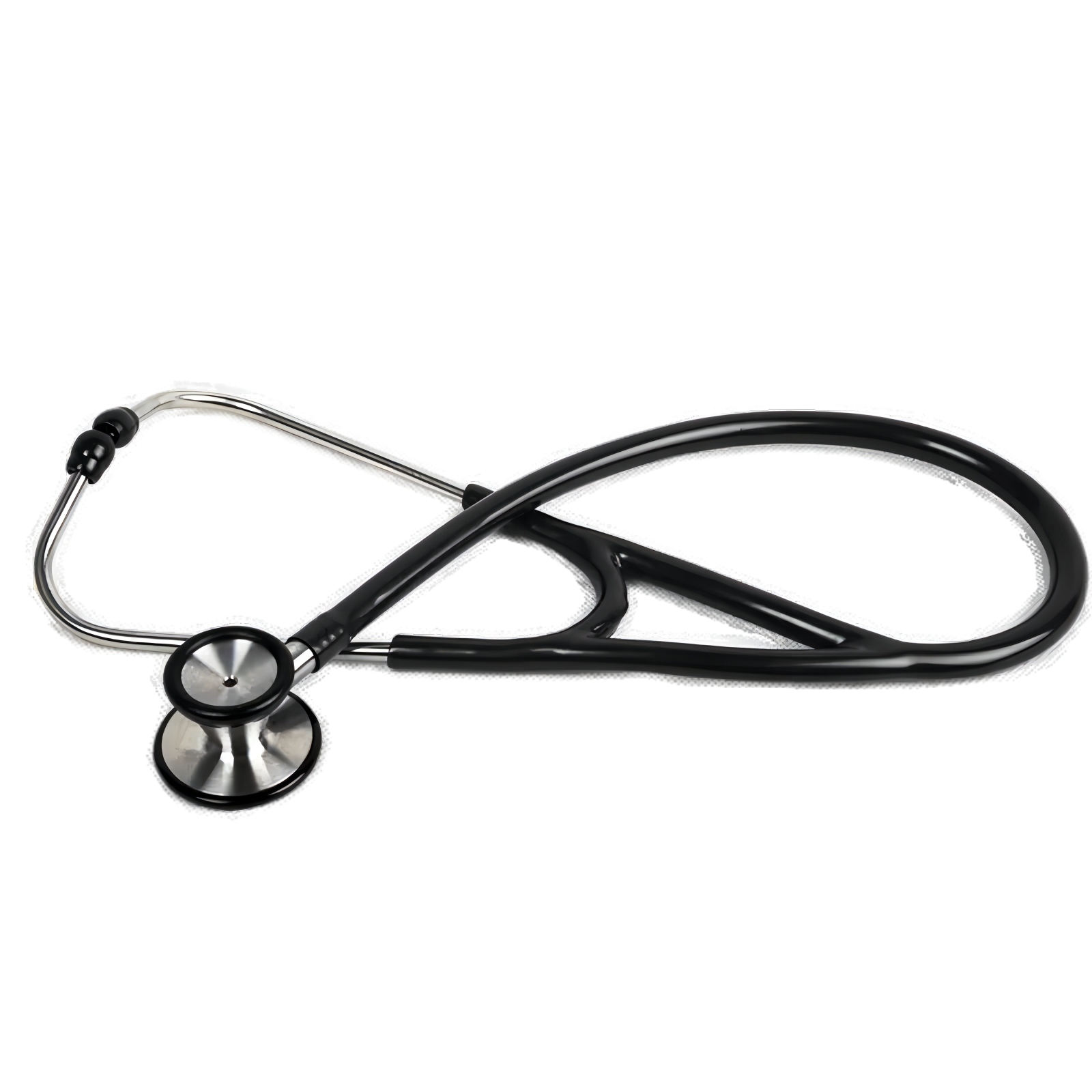The Medical Stethoscope is an indispensable tool for healthcare professionals worldwide, providing crucial insights into the condition of the heart, lungs, and other vital organs. Whether you are selecting a custom medical stethoscope or seeking a wholesale medical stethoscope supplier, understanding how to effectively use this device is paramount. This article, based on expert knowledge, will guide you through the essential steps and considerations in using a medical stethoscope properly.
Introduction to Stethoscopes: Function and Importance
Stethoscopes, a staple in the medical field, have been used since the early 19th century to accurately interpret the sounds of the human body. Originally invented as a simple tube for amplifying sound, they have evolved into sophisticated devices manufactured by leading medical stethoscope factories. These instruments are critical for diagnosing and monitoring conditions, used extensively in both hospital and home care settings. Their ability to provide non-invasive insights makes them invaluable in clinical diagnostics.
● Key Components of Stethoscopes
Modern stethoscopes typically consist of a chest piece, tubing, and ear tips. The chest piece often includes a diaphragm and a bell, each designed to capture different frequency sounds. Understanding these components helps in selecting the best stethoscope for specific medical needs, whether from a medical stethoscope supplier or directly from a medical stethoscope manufacturer.
Selecting the Right Stethoscope: Features to Consider
Choosing the right stethoscope involves more than just picking a brand; it requires careful consideration of features that affect performance and comfort.
● Different Types of Stethoscopes
There are various stethoscope types, ranging from acoustic to electronic models. Acoustic stethoscopes, favored for their simplicity and affordability, are widely used by medical students and general practitioners. On the other hand, electronic stethoscopes, available in custom medical stethoscope options, provide amplification and recording features beneficial for complex diagnostics.
● Factors Affecting Sound Quality and Comfort
When selecting a wholesale medical stethoscope, factors such as tubing length, material quality, and diaphragm responsiveness must be considered. A well-chosen stethoscope not only ensures accurate sound transmission but also enhances user comfort, reducing fatigue during extended use.
Proper Fitting: Adjusting Earpieces and Tubing
Ensuring a proper fit is essential for effective use of a stethoscope. This involves adjusting both the ear tips and the tubing to suit individual preferences and anatomical nuances.
● Importance of a Good Fit and Seal
A good seal enhances sound clarity by preventing external noise from interfering with auscultation. Medical stethoscope suppliers often provide ear tips in various sizes and materials to accommodate different users, ensuring a snug fit for optimal sound isolation.
● Steps to Adjust for Comfort and Efficiency
To adjust your stethoscope, start by positioning the ear tips comfortably in your ears, angled forward to align with the ear canal. The tubing should hang freely without kinks, allowing for clear sound transmission. Custom medical stethoscope designs often incorporate flexible tubing options to enhance user experience.
Understanding Chest Piece Options: Diaphragm vs. Bell
The chest piece is the heart of the stethoscope, with the diaphragm and bell serving distinct purposes in auscultation.
● Differences in Use and Sound Transmission
The diaphragm is best for high-frequency sounds such as heartbeats and breath sounds, while the bell is designed for lower-frequency sounds, like murmurs. Selecting the appropriate component is crucial, especially when using an OEM medical stethoscope designed for specialized applications.
● Choosing the Right Chest Piece for Specific Exams
Depending on the type of examination, a healthcare professional may prefer a single-sided diaphragm or a dual-sided chest piece. Some advanced models, provided by medical stethoscope factories, offer tunable diaphragms that allow for versatility in clinical settings.
Heart Auscultation Techniques: Basic to Advanced
Heart auscultation is a fundamental skill for assessing cardiac function. Mastering different techniques is crucial for accurate diagnosis.
● Positioning the Stethoscope for Optimal Heart Sound Detection
Correct positioning of the stethoscope on key chest areas—such as the aortic, pulmonic, tricuspid, and mitral areas—facilitates detection of subtle heart sounds. Wholesale medical stethoscope suppliers often offer models with superior acoustic performance, crucial for distinguishing between normal and abnormal sounds.
● Identifying Normal and Abnormal Heart Sounds
Recognizing the differences between S1, S2, and abnormal heart sounds like murmurs or gallops is essential. Training with an ODM medical stethoscope can provide enhanced acoustics necessary for distinguishing these complex auditory cues.
Lung Auscultation: Listening for Respiratory Sounds
Lung auscultation requires meticulous attention to detail, focusing on respiratory sounds that indicate health or pathology.
● Correct Placement and Sequence of Listening Areas
Systematic auscultation begins with the upper lung fields and moves downward, ensuring coverage of all key areas. Proper sequencing aids in comparative analysis, whether using a standard or custom medical stethoscope.
● Recognizing Normal Breath Sounds and Abnormalities
Identifying normal breath sounds and distinguishing them from wheezes, crackles, or rhonchi is essential for respiratory assessment. State-of-the-art stethoscopes provided by top medical stethoscope manufacturers can amplify subtle lung sounds, aiding in precise diagnostics.
Abdominal Auscultation: Identifying Bowel Sounds
Abdominal auscultation provides insights into gastrointestinal health through the evaluation of bowel sounds.
● Techniques for Listening to Various Abdominal Quadrants
Place the stethoscope in each abdominal quadrant, listening for gurgling sounds indicative of normal bowel activity. A medical stethoscope factory might offer specialized models to enhance these assessments, making them a preferred choice for gastroenterologists.
● Differentiating Between Normal and Pathological Sounds
Understanding the difference between normal bowel sounds and pathological ones—such as high-pitched or absent sounds—can aid in diagnosing conditions like bowel obstruction or ileus.
Identifying Bruits: Recognizing Vascular Sounds
The ability to identify bruits, abnormal vascular sounds indicating turbulent blood flow, is another important skill for healthcare professionals.
● Techniques for Detecting Arterial Narrowing
Listening over arteries such as the carotid and femoral with a medical stethoscope can reveal bruits, suggestive of stenosis. OEM medical stethoscopes with enhanced acoustic sensitivity are particularly useful in these scenarios.
● Understanding the Implications of Hearing a Bruit
Detecting a bruit necessitates further investigation, often indicating underlying vascular pathology that requires prompt medical intervention.
Blood Pressure Measurement: Stethoscope and Sphygmomanometer Use
Combining a stethoscope with a sphygmomanometer enables accurate blood pressure measurement, a routine yet critical procedure.
● Steps to Accurately Measure and Interpret Blood Pressure
Position the stethoscope’s diaphragm over the brachial artery, inflate the cuff, and listen for Korotkoff sounds to determine systolic and diastolic pressures. Whether using a wholesale medical stethoscope or a custom design, precision in this process is paramount.
● Common Mistakes and How to Avoid Them
Errors in cuff placement, pressure release speed, or sound misinterpretation can lead to inaccurate readings. Familiarizing oneself with stethoscope functionality can help mitigate these errors, ensuring reliable results.
Cleaning and Maintenance: Ensuring Longevity of Your Stethoscope
Proper care extends the life of a medical stethoscope, maintaining its performance and hygiene.
● Guidelines for Regular Cleaning and Care
Regular cleaning of the ear tips, diaphragm, and tubing with alcohol wipes prevents infection transmission. Medical stethoscope suppliers may offer maintenance kits to facilitate this process, ensuring a long-lasting, hygienic instrument.
● Preventing Damage and Maintaining Sound Clarity
Avoid exposing the stethoscope to extreme temperatures or solvents that can degrade material quality. Regular inspections and appropriate storage practices, as advised by a reputable medical stethoscope manufacturer, will preserve sound clarity and device integrity.
Conclusion and Company Introduction
Proper usage of a medical stethoscope is fundamental in delivering accurate medical assessments. From fitting to maintenance, each step enhances the efficiency and reliability of this vital instrument. When selecting a medical stethoscope, consider trusted manufacturers like Leis. Leis is committed to delivering high-quality medical devices, offering comprehensive solutions designed to meet the needs of healthcare providers worldwide. With a focus on innovation, quality, and customer satisfaction, Leis stands as a leader in the medical supply industry, continually enhancing the tools and technologies that empower medical professionals.

